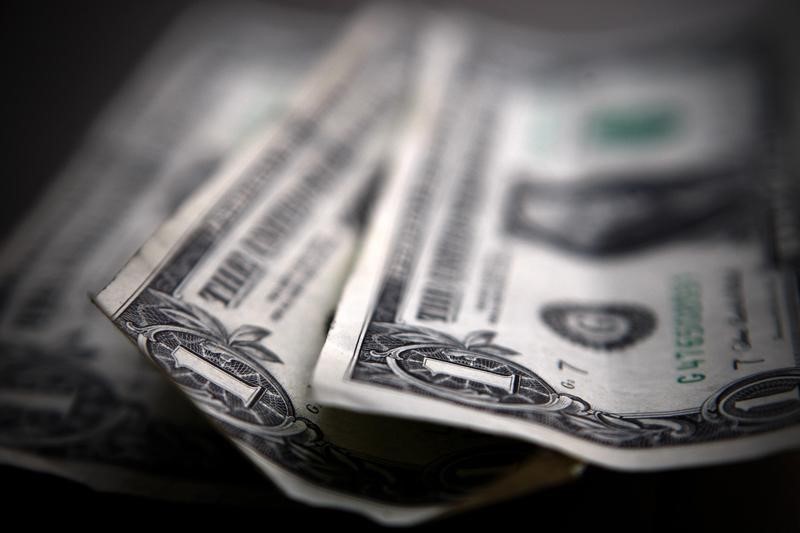Trump/Putin summit, UnitedHealth and Japan’s GDP - what’s moving markets
Investing.com - The U.S. dollar slumped to multi-year lows Thursday, as a renewed attack on Federal Reserve Chair Jerome Powell by President Donald Trump raised concerns about the future independence of the U.S. central bank.
At 04:30 ET (08:30 GMT), the Dollar Index, which tracks the greenback against a basket of six other currencies, fell 0.6% to 96.682, dropping to its lowest since early 2022.
Dollar slumps as Trump undermines Powell
Fed Chair Powell reiterated his cautious stance on the second day of his two-day testimony before Congress during the prior session, reiterating that interest rate cuts would wait until the inflationary impact of tariffs is clarified, noting that tariffs could push up prices beyond a one-time increase.
This prompted more criticism from U.S. President Donald Trump, calling Powell "terrible" for not lowering interest rates sharply.
According to a Wall Street Journal report, Trump had toyed with the idea of selecting and announcing Federal Reserve Chair Jerome Powell’s replacement by September or October, aiming to undermine his position given his term is scheduled to end in May 2026.
“I know, within three or four people, who I’m going to pick,” Trump said. “He goes out pretty soon fortunately, because I think he’s terrible.”
Such a move could raise questions about a potential erosion of Fed independence, undermining faith in the soundness of the country’s monetary policy.
“Powell continues to attract the heat of the Trump administration, and now that two members (Waller and Bowman, both appointed by Trump) are openly disagreeing with the cautious/hawkish stance, markets may well be quick to respond with a dovish re-rating of expectations to soft U.S. data,” said analysts at ING, in a note.
“At the same time, media reports that Trump is considering an early appointment for the next Fed chairman are further bolstering dovish bets.”
Markets have nudged up the chance of a rate cut at the Fed’s next meeting in July to 25%, from just 12% a week ago.
Euro in demand
In Europe, EUR/USD surged 0.4% to 1.1706, climbing to its highest level since September 2021.
“The euro might have drawn marginal support from NATO agreeing on the 5% defence spending target and Trump sounding broadly conciliatory towards its allies (with the exception of Spain),” said ING. “But in practice, EUR/USD remains almost entirely a USD story.”
“A clearing of the 1.170 level should set the sights on 1.20, although some further deterioration in U.S.-specific factors may well be necessary to get there.”
Yet, despite these gains, Trump’s July 9 deadline for trade deals is drawing nearer, and the single currency could still face difficulties should the European Union incur the U.S. president’s wrath again.
Additionally, the latest German consumer sentiment index, for July, fell to -20.3 points from a slightly revised -20.0 points the month before, pointing to difficulties ahead.
GBP/USD climbed 0.6% to 1.3748, reaching its highest since January 2022, with sterling benefiting as investors question the dollar’s dominant reserve currency status.
Japanese yen strengthens strongly
In Asia, USD/JPY traded 0.9% lower to 143.97, with the Japanese yen benefiting from the dollar selloff, as attention turns towards Friday’s Tokyo inflation data.
The print is likely to factor into the Bank of Japan’s plans to raise interest rates, with a recent uptick in price pressures driving up bets that a hike was imminent.
USD/CNY slipped 0.1% to 7.1683, with the yuan reaching its strongest level in seven months against the greenback.
The currency was encouraged by comments from Chinese officials that likely heralded more stimulus measures in the country. Local media reports said China’s National Development and Reform Commission will issue a new batch of consumer trade-in incentives and subsidies in July, likely offering more support for spending.
